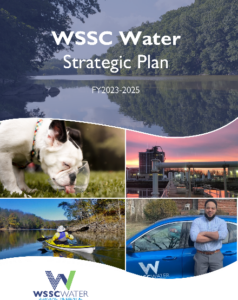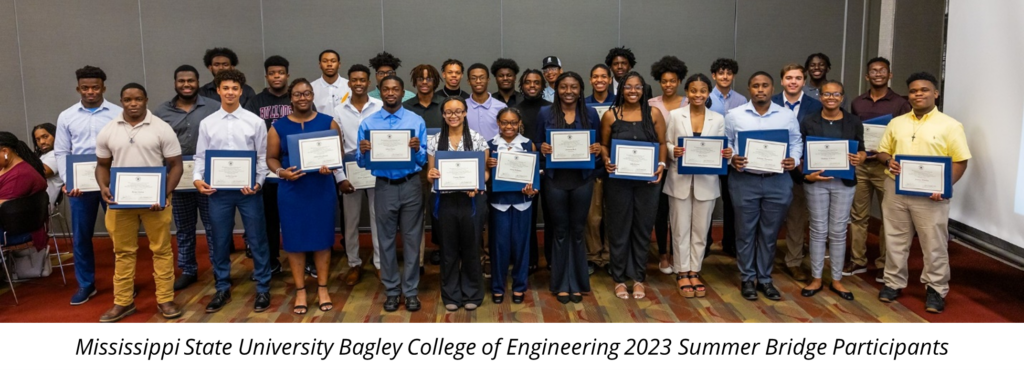Public and private sector practitioners highlight best practices to meet generational infrastructure moment.
(Download)
Passage of the $1.2 trillion Infrastructure Investment and Jobs Act (IIJA) in late 2021 was a watershed moment for investment in our nation’s infrastructure. The law begins to reverse decades of underinvestment in our nation’s roads, bridges, and water systems, while expanding energy investments, connecting all Americans with high-speed internet, and more.
Investments and policy improvements enabled by the law are welcomed by communities across the country eager to strengthen their economies and improve the quality of life for their residents. However, these increased investment levels amid accelerating retirement trends and poor attrition rates in the infrastructure space are compounding existing gaps in the engineering and infrastructure workforce and threaten the overall impact of this generational opportunity.
To address these challenges, the American Society of Civil Engineers (ASCE) and the National Governors Association (NGA) Center for Best Practices convened a group of practitioners to identify actionable approaches that private industry and public sector infrastructure groups can utilize to address workforce shortages.
During the one-day roundtable in May 2023, ASCE and NGA solicited workforce development input from America’s Governors’ offices and appointees, the federal government, infrastructure owners, operators from the public and private sectors, engineering contractors, and academics training tomorrow’s workforce. In addition to discussing employer best practices, the roundtable also included discussion of short- and longer-term solutions that employers and states can implement via programs and policy to grow the pipeline of engineers and infrastructure workers.
Specifically, roundtable participants discussed:
Short-term recruitment and retention strategies for the engineering and infrastructure professions, including:
-
- Identifying current workforce pain points and goals
-
- Evaluating compensation, flexibility, and advancement opportunities
-
- Incorporating caregiving needs into workplace programming and culture
-
- Supporting employees on the sidelines with flexible career re-entry tools
-
- Reducing time-to-hire and other recruitment barriers
-
- Reducing barriers to procurement success for small firms and disadvantaged business enterprises
-
- Reducing barriers to entry as the pipeline expands
-
- Offering place-based opportunities in communities benefiting from investment
-
- Building strategic partnerships with schools, skills, and community organizations
-
- Praising and promoting the technical achievements of infrastructure
Long-term education and industry advancement strategies, including:
-
- Increasing the affordability of education
-
- Creating multiple entry points to the engineering and infrastructure professions
-
- Developing college programming for engineering student retention and support
-
- Encouraging high school students to enter infrastructure professions
-
- Developing and supporting STEM curriculum in K-12 education
The following brief summarizes examples and key takeaways from the discussion on the above topics.
Short-Term Recruitment & Retention Strategies for the Engineering and Infrastructure Professions
Identify Current Workforce Pain Points and Goals

Expectations and needs at both public agencies and private firms have shifted. To better identify those shifts, employers should consider assessing existing opportunities and gaps with staff surveys, listening sessions, and plans with actionable steps. Many organizations share challenges like work-life balance, retention, advancement, and job satisfaction. But there are often very specific engineering needs in different contexts and individual businesses.
In 2022, when Kishia L. Powell became CEO of the Washington Suburban Sanitary Commission (WSSC), one of the largest water and wastewater utilities in the nation, she led a transition team effort that included 90 days of listening sessions with a broad cross-section of employees—about 1,000 staffers—representing all levels of the organization. The listening sessions were designed to assess pain points, amplify what worked well, and to surface specific and actionable recommendations. The group provided candid feedback that addressed both perennial and anticipated challenges within the organization. Through the listening sessions and various other feedback loops, 178 actions were identified and eventually incorporated into the WSSC Water FY23-25 Strategic Plan—50 of which related to workforce needs and priorities. The plan included concerns heard from plant engineers, accountants, pipeline technicians, and cybersecurity experts, among others.
Evaluate Compensation, Flexibility, and Advancement Opportunities
Workforce recruitment and retention within this sector could benefit from providing employees with competitive pay, benefits, mentorship, and advancement opportunities. Infrastructure contractors and the private sector generally have greater flexibility on these issues, but they too face financial constraints. Raising staff pay must be balanced with competitive bids for projects and fiduciary obligations to investors.
One strategy the public sector might consider is requesting special authority to increase pay scales in some specialties and geographic areas. The U.S. Army Corps of Engineers has successfully bolstered retention and recruitment by securing special salary authority. The Corps was also granted “direct-hire authority” to make job offers more quickly, especially for urgent needs (for example, electrical engineers working on hydropower plants in remote locations).
Incorporate Caregiving Needs into Workplace Programming and Culture
Women earned 28% of undergraduate civil engineering degrees in 2021, but they accounted for only 17% of civil engineering employment in that same year. Across all architecture and engineering fields, women have grown slowly as a portion of the workforce: to 16% of the industry in 2022, from 14% in 2012, and 12% in 2002. That’s compared to chemical science, which grew from 30% to 46% female in those 20 years.
Infrastructure fields are losing women employees at a rapid pace, especially around the age they have children. Also, female engineers report that “leaving engineering and trying to come back is not an easy feat. That is why many women who take a break to care for their children, never return.” In 2021, the Society of Women Engineers produced a literature review of its own annual education report. From those 20 annual reports, the Society concluded that “the field is perceived as hostile to women, and if women’s experiences in the field bear that out, they are unlikely to select it from the available options or to stay if they begin an engineering career.”
Infrastructure careers frequently require long hours, but workplace investments and programming can attract and retain workers who have caregiving responsibilities. An updated set of best practices, sophisticated support structures, and culture improvements can be valuable tools for the industry to succeed at that challenge. Adding remote work and flexible scheduling has been proven to attract high-quality talent.
Additionally, public and private entities could look to enhance training, development, and mentorship opportunities for all employees. Infrastructure employers can maximize the well-being and performance of their staff with training, flexibility, and mentorship. There is fear among some employers that limited budgets spent investing in existing workforce will be lost when staff leave; however, failing to provide professional development, upskilling, and other opportunities can result in overworked, under-supported workers who will be expensive to replace when they depart. Workers are happier and more likely to stay in their position and this industry when they are supported with training, provided sample roadmaps for tough choices in time management, and shown grace when balancing career with caregiving responsibility.
Support Employees on the Sidelines with Flexible Career Re-Entry Tools
Engineering and other infrastructure careers require continuing education to improve job performance and upskill in an evolving industry. Acquiring Professional Development Hour (PDH) credits and mid-career certifications shows continued proficiency and demonstrates new learning necessary for innovation. However, infrastructure workers report that continuing education requirements are frequently a financial and logistical barrier to re-entry into the field. Employers in the infrastructure space can encourage talent to rejoin the workforce by providing tailored pathways for recertification or re-licensure, as well as support staff looking to temporarily downshift by developing a roadmap for maintaining licensure in a way that matches an employee’s flexibility needs.
Reduce Time-to-Hire and Other Recruitment Barriers
Public sector infrastructure employers can improve their capacity to deploy infrastructure investments by expediting the hiring process, including the onboarding of each new hire. Many workers lack the time or flexibility to endure months of interviews, waiting for reviews and approvals, and the lingering uncertainty that arises between a verbal job offer and an official one.
Infrastructure employers may consider improving their workforce development quickly by reducing the internal and inter-departmental procedural hurdles of recruitment, such as civil service exam requirements. For example, the Washington State Department of Transportation (WSDOT) has a time-to-hire of about 60 days, ahead of many state agencies, and cultivates a recruitment culture characterized by urgency and efficiency. Once the agency decides to open a position, hiring managers are trained to prioritize interviews and recruiting activities over other job tasks. WSDOT makes recruitment timelines clear to job candidates and will hold back filling a position until the hiring team has bandwidth to focus on interviews.
Reduce Barriers to Procurement Success for Small Firms and Disadvantaged Business Enterprises

Leaders of small engineering and infrastructure firms, including those from disadvantaged business enterprises (DBE), face significant challenges leveraging existing programs to support their firms. Extensive paperwork and disparities for women and minority-owned employers intensify the burden of seeking certifications from different states, intrastate agencies, various municipalities, and even different contracts within the same funder entity.
Infrastructure funders can improve their support for these employers by taking specific measures. Reducing compliance work, granting reciprocity to procurement rules where state law and policy allow for these preferred workplaces, and expanding awareness of these programs among start-up and non-traditional firms can tackle bureaucratic hurdle and ease the burden of multiple certifications.
In certain cases, infrastructure decision-makers can nurture the success of DBE firms by advocating for policymakers’ support for those institutions with higher DBE requirements in public contracting. When jurisdictions actively pursue DBE goals and implement related procurement rules, they provide vital financial support, enabling these businesses to maintain high-quality work, sustain their operations, secure additional contracts, and invest in worker training. This approach empowers DBE firms but also fosters growth and competitiveness within the industry.
Reduce Barriers to Entry as the Pipeline Expands
Infrastructure employers will be most effective in addressing workforce challenges by lowering barriers to entry as they expand the pipeline of workers into engineering and technical trades. To reduce barriers, leaders can reconsider the minimum requirements of existing and new positions in their organizations. Job descriptions can be re-tooled to focus on capabilities rather than requirements that include a set number of years in specific previous roles and education programs of degrees received. Infrastructure employers could also benefit from reevaluation of which skills are truly necessary from day one – or trained up over time. Governors from New Jersey, Utah, and several other states have supported this approach.
Also, there are benefits from holistic review of workflows and considering re-assignment of regular work tasks to specialized, lower-cost positions with software tools and construction methods that can be approachable for candidates beginning their careers, changing careers, or re-entering the workforce.
Employers may find ready and willing workers who are “skill-adjacent” to the normally recruited populations. Engineering and infrastructure jobs require skills, many or most of which are also required by other fields. Examples of common adjacent skills include digital design modeling, quantitative data manipulation, and project management. Employers should consider what related industries also require these skills and which pools of talent could retool their skills from analogous applications into infrastructure competencies.
Offer Place-Based Opportunities in Communities Benefiting from Investment
The 2021 IIJA and other recent federal investments direct significant sums of money to disadvantaged communities, areas overlooked by previous infrastructure funding, and restorative projects within neighborhoods. Infrastructure employers can utilize dollars to hire locally for all different aspects of projects. The engineers who design, technicians who build, and managers who facilitate the construction or rehabilitation of a bridge are positioned to succeed on projects in their communities.
“You have to see it to be it”: Workers won’t pursue roles where they do not see people like themselves or feel unsafe. Diversity not only in leadership positions, but all types of roles within the company, creates a self-sustaining cycle of recruitment success. There is benefit from sharing the many paths to the job they have now: Lift up the leaders who transitioned from community colleges to four-year universities; celebrate the individuals thriving after mid-career industry changes, and later-in-life pursuits of classroom and job site training. Share the stories of senior leaders who began as liberal arts majors and those who were told “math and science isn’t for you.”
Employers in both the public and private sectors would benefit from demonstrations of more inclusivity to include racial diversity, women, and youth at in-person events and in their marketing campaigns. Infrastructure employers may find that job fairs, job shadowing, apprenticeships, and micro-internships are better subscribed programs when candidates meet staff who were subjected to similar challenges of racial discrimination, gender bias, economic disadvantage, or involvement with the criminal justice system.
Build Strategic Partnerships with Schools, Skills, and Community Organizations
Workforce challenges are complex and differ depending on industry, location, skill type, and many other factors. However, one common challenge faced by employers across the field is the recruitment and retention of workers from underrepresented backgrounds. “Where are the workers and how do we keep them?” is not a question with a simple answer.
Strategic partnerships connect stakeholders with different assets and capabilities. Employers will find more success recruiting from diverse student bodies when outreach is more proactive – for example, an official co-branded effort between campus leadership and c-suite. Importantly, student applicants may perform better if their professors and teachers prepare them with realistic job skills, knowledge, and expectations. Co-branded worksite visits, hard hat experiences, and curriculum developed with employer consultation modernize a school’s academic offerings. Finally, infrastructure employers may find greater success with these academic partnerships when financial support is tied to this learning. Financial aid may zero out the cost of a credit hour, but the opportunity cost of a job down the street remains.
For example, the U.S. Army Corps of Engineers (USACE) has successfully partnered with the University of Puerto Rico to recruit from its engineering school. The Corps also focuses on outreach and partnership with Historically Black Colleges and Universities (HBCUs). These and other strategic initiatives help USACE reach 32% female employees and 23% staffing from racially diverse backgrounds. An effective aspect of their recruiting process is creating a culture of belonging and ensuring that diverse participants are involved at all roles and levels of leadership in the agency or company.
Despite their comprehensive academic experience, many engineering students, including their professors, may lack familiarity with the unique applications of classroom fundamentals. Great Lakes Dredge and Dock Company reaches out to schools with coastal and inland waterway programs, with invitations to school leadership and teachers to provide real-world, hands-on experience. The company has found that exciting professors and school leadership about their industry has the outsized impact of exciting entire student cohorts. In other words, getting educators interested in infrastructure is a significant step to sparking the fascination of their students.
Partnerships can provide low-stakes, alternative pathways to someone who would be the first person in their family to go to college, the only young person on their block to consider a STEM field, or who is wary that longer, higher-stakes commitments might come with more risks than benefits. Southern Illinois University at Carbondale has a campus in East St. Louis where Illinois DOT runs a cooperative Civil Engineering Technician Program. Students are required only to have a high school diploma or GED and be from a disadvantaged community. The 10-week training is free, students receive a $300 per week stipend, and are guaranteed a job at Illinois Department of Transportation with an 18-month commitment.
Infrastructure employers can succeed with more diverse recruitment by building strategic partnerships with specific schools, trade unions, guilds, skill-based organizations, and community groups with trust in communities of varying geographies, racial, gender or other identities. Infrastructure employers have found success with other work exposure and apprenticeship programs facilitated through state and local chambers of commerce, labor unions, community colleges, technical high schools, and criminal justice trial-diversion programs.
Praise and Promote the Technical Achievements of Infrastructure
Too often in engineering and public infrastructure, workers are scorned for public failures and only rarely praised publicly for their successes. Innovation in drinking water treatment methods is fodder for niche industry publications, while boil water advisories and power outages are covered widely by mainstream media. Most people have heard of their state department of transportation, water utility, and other infrastructure owner, but it’s likely they don’t associate those places with job opportunities and public acclaim.
Infrastructure employers and owner-operators can use traditional and social media to attract attention to infrastructure and civil works fields. The use of social media platforms, outreach and hiring efforts can be extended to a larger demographic with revamped industry branding efforts to portray a more diverse workforce that reflects the current U.S. population. Marketing partnerships with high-viewership media are a highly effective strategy. WSDOT saw an increase in job applications after advertisements during NFL games and the Olympics.
Interactive digital experiences and hard hat open houses attract residents and other stakeholders who pay little mind to infrastructure systems when they work well. Leaders can share “Day in the Life” stories on social media like Instagram to make infrastructure jobs relatable and real to viewers.

Long-Term Education & Industry Advancement Strategies
Increase the Affordability of Education
The cost of education and training can be a prohibitive financial barrier and deterrent for many potential infrastructure workers. The burden impacts those pursuing engineering degrees at a four-year university, individuals balancing low wages with community college, or students paying up-front costs of technical training and certifications. Infrastructure employers can consider tuition repayment programs, while the public sector may consider loan forgiveness and payment matching, and similar subsidies.
Create Multiple Entry Points to the Engineering and Infrastructure Professions
Solving the workforce challenge requires more than increasing the number of engineering graduates. Infrastructure employers should build multiple career pathways with on-ramps that support highly skilled professionals, entry-level workers, and workers with non-traditional backgrounds. Military veterans often specialize while on active duty, but their training includes transferrable skills like project management and team leadership. Infrastructure employers are finding success translating military experience into public infrastructure service. Employers can find success in supporting military veterans transitioning back into the civilian workforce with outreach and rapid re-training opportunities.
Develop College Programming for Engineering Student Retention and Support
Significant numbers of college students studying engineering face difficulties early – often in their first year – and especially if they are from backgrounds underrepresented in the profession. These headwinds present challenges before students arrive on campus and stretch far beyond the classroom. For example, family support may be present for first-gen and continuing-gen students, but the latter may receive specific advice on academics while the former must look elsewhere for advice on difficult assignments. However, academic institutions and stakeholders in infrastructure can be more effective in retaining students by developing and investing in programming outside the classroom.
Mississippi State University offers a summer bridge program for rising high school seniors and incoming first-year students enrolling in their Bagley College of Engineering. The five-week program is free, and includes on-campus housing, access to class instructors, peer mentors, textbooks and materials, some meals, and more. Math remediation and entry-level science courses are also offered to make up for insufficient and under-resourced high school environments and better prepare students for more rigorous college coursework. These wraparound benefits, as well as the supportive introduction into intensive coursework, significantly increases retention rates for first-generation and low-income students, as well as students from racially and ethnically diverse backgrounds.
Organizations may also find success removing the financial barriers of entry for students underrepresented in the infrastructure field. The National Action Council for Minorities in Engineering (NACME) works with HBCUs, Hispanic-Serving Institutions (HSIs), and organizations targeting similar populations to provide scholarships, resources, and opportunities for high-achieving, underrepresented minority college students pursuing careers in engineering. When those barriers can be removed, engineering students are better able to adjust to a new learning and living environment and persist through their first year increasing the probability of timely graduation rates.

Encourage High School Students to Enter Infrastructure Professions
According to the Georgetown University Center on Education and the Workforce, 75% of the 15 million new and saved infrastructure jobs from recent federal investments only require a high school diploma or some short-term credentials or training. A separate study from the Brookings Institute found that infrastructure occupations pay 30% higher wages to lower-income workers. When considering entry-level employment, high school seniors would command higher wages and more advancement when entering professions like bus and truck mechanic, highway maintenance worker, or electrical power-line installer, compared to other jobs.
The Generation Z cohort seeks and stays with employers that display socially minded values and conduct work that benefits the public. The Millennial cohort displays similar mission-driven desires. Those two groups, everyone under age 42, are tomorrow’s senior project leaders and shepherds of organizations implementing recent and future infrastructure investment.
To help with recruitment, the civil engineering industry can better advertise the role employees can have in bettering their communities, and that engineering is a difficult but attainable profession. ASCE organizes and supports the establishment of civil engineering clubs, which let high school students meet, work with mentors, and explore the civil engineering field through activities, lessons, and field trips. Multimedia content and interactive experiences help students visualize the potential a career in civil engineering. For example, ASCE produced a feature-length film called “Dream Big,” which highlighted the most exciting people and engineering projects across the globe. “Cities of the Future,” which will debut in IMAX theatres fall 2023, explores how our world is adapting to population, climate, and technology trends. The film tours the captivating possibilities of a city in 2075, in hopes of inspiring today’s youngest minds to take up civil engineering and contribute to a better tomorrow.
Develop and Support STEM Curriculum in K-12 Education
STEM education has been a priority for many years in American politics and curriculum development. Infrastructure leaders would benefit from supplementing this attention and funding with classroom and off-site programming that shows infrastructure jobs as applications of many science and math topics discussed in STEM lessons.
To solve the engineering workforce challenges, America can double down on efforts to recruit and support more and better teachers. Infrastructure stakeholders will also find benefits from joining coalitions and partnerships to improve access to high-quality education on fundamental topics. The Mississippi School for Mathematics provides 200 students each year with an extremely high level of instruction in STEM fundamentals. The public school would enroll more students, but it depends on funding that is frequently threatened. Despite that uncertainty, the school leverages technology to reach beyond on-site enrollment with distance learning classes in basic science and engineering that reach rural and low-resource schools across the state.

No One-Size-Fits-All Solution to Workforce Challenges
There is not a singular workforce challenge in America’s engineering and infrastructure industry, but rather many challenges that can be met with varied, innovative solutions and creative leadership. Maximizing the implementation of the Infrastructure Investment and Jobs Act and other investment requires the breaking down of specialty silos, the re-thinking of jobs as collections of acquired skills, and the support of a workplace offering flexibility of work that values an individual’s life outside of the office or job site.
Looking to the future, our communities will be best served by emphasizing the role engineering and infrastructure play in community-wide problem-solving and making the world a better place to live. Employers should be ready to retool their training methods and work with academics to connect the wonders of STEM topics with the awesome power of their application.

